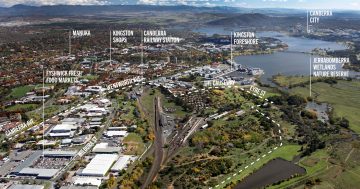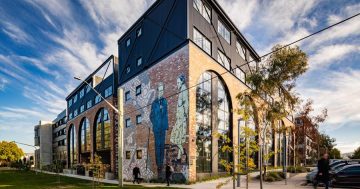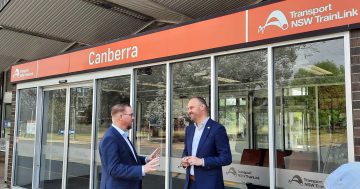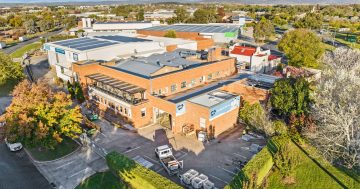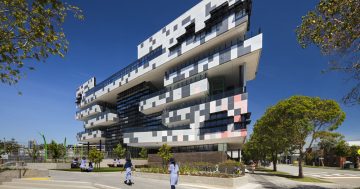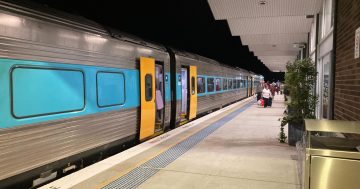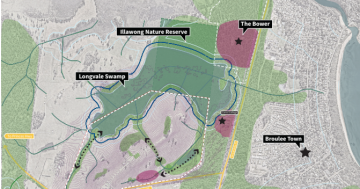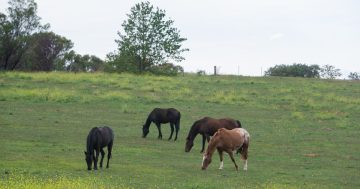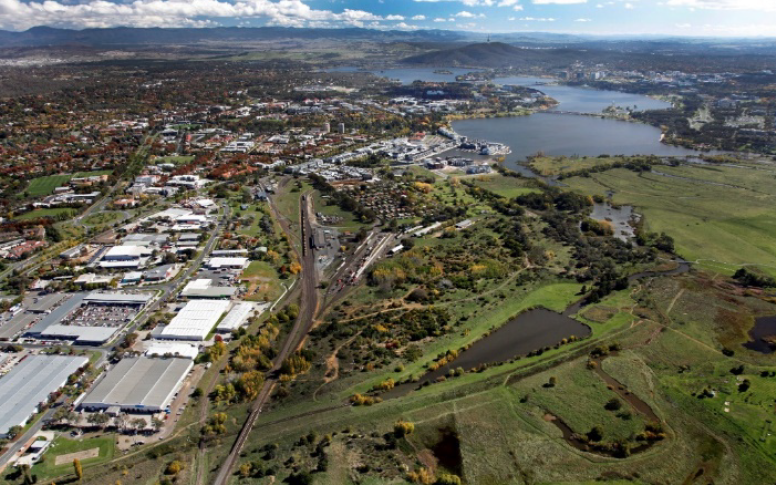
East Lake from the air. Thousands will eventually call it home. Photo: ACT Government.
Who will live in the part industrial wasteland of the East Lake urban renewal area and what will they need?
These are the questions the ACT Government wants answered as it prepares for a significant transformation of the strategically-located site between Kingston and Fyshwick, bordering the Jerrabomberra wetlands.
The area has been earmarked for medium-to-high density residential development for years but a new Community Needs and Demographic Assessment will provide information vital to how the area will take shape.
The site covers parts of the suburbs of Kingston, Fyshwick and Griffith. It includes Canberra Railway Station, the Mildura Street industrial/commercial area and the growing Canberra Avenue east-west corridor linking Canberra with Queanbeyan.
Earlier studies envisaged 9000 people living in the precinct and 3000 working there.
The ACT Government intends to release land between the railway corridor and the wetlands, with an initial target of 650 residential dwellings in 2025/26.
Earlier this year it released a tender for a lead consultant to design a Place Plan and Indicative Development Concept, provide a Planning Report to support a variation of the Territory Plan to facilitate the project and an Estate Development Plan.
SGS Economics and Planning has been hired separately to do the demographic study, which will look 30 years into the future.
It will analyse current and future population projections of the East Lake site and surrounds based on the ACT’s growing and changing population and household types.
The study will look at what education, community, sports and recreation facilities exist in the area and what may be needed as East Lake develops.
It will include options and recommendations for future facilities and when they should be introduced, including money-saving opportunities like co-locating facilities such as schools.
It will also provide a detailed analysis of existing Inner South schools’ current and future capacity to meet additional future demand for enrolments and whether new schools will need to be built, taking into account proximity to residential areas, public transport and active travel routes.
“This analysis will consider the current and future retail, employment and residential growth/trends, the changing demographic characteristics of the area and any implications on the demand for education, community, sport and recreation facilities in East Lake and Canberra’s Inner South,” the contract details say.
SGS will consult with existing and emerging community organisations, local service providers, the Dhawura-Ngunnawal Caring for Country Committee and ACT Government Directorates.
A final report with recommendations is expected in mid-July.
The government envisages East Lake being comprised of various housing types such as townhouses, terrace houses and other ‘missing middle’ medium-density housing, with higher densities in strategic locations around transport infrastructure and services.
The aim will be for a mix of public and affordable housing, long-term rental accommodation such as Build-to-Rent models and multigenerational housing, incorporating adaptable ‘universal design’ to create a diverse community.
The government hopes East Lake can also include an innovation hub, leveraging Fyshwick CIT as part of business and industry activity in the precinct.
It expects the area to be fully integrated into active transport links such as cycling paths and public transport, including possibly light rail, which could link with a new interstate rail line.
The area, contaminated by former industrial use and dumping, will have to be rehabilitated before any development occurs. That, too, is being handled separately.












